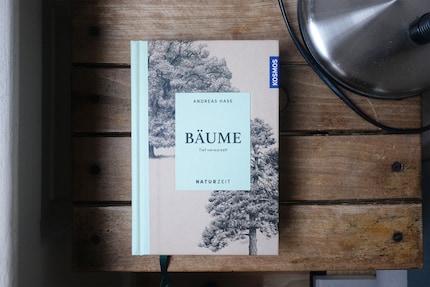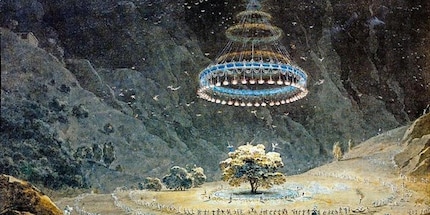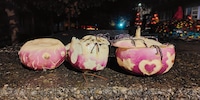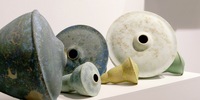

My brain on a detour, or what a knife has to do with natural Viagra
Is this a kitchen knife recommendation or a background article on trees? Probably both. But first and foremost, it’s an insight into my psyche.
I had intended to write about a knife. A good Santoku knife. One that puts my old Ikea grot to shame, both in terms of price and quality. It’s razor-sharp – which my finger recently experienced first-hand while washing up – and hand-forged from one piece, with a double bevel. The handle is made of walnut wood from the Prättigau region in the canton of Graubünden.
As I examine the wood, my mind wanders to a book I bought recently titled «Bäume, tief verwurzelt» (English: Trees, deeply rooted) filled with facts, myths and beautiful illustrations on the topic of trees. Immediately, I look for the chapter on walnut trees and start reading. The knife rests somewhere, forgotten. (If the knife still figures prominently in your mind, scroll down to the second to last paragraph; you’ll learn a tad more about it there.)

Did you know that walnuts...?
Over the course of six pages, I learn that the leaves of the true walnut (juglans regia) smell like green apples when you grind them in your hand. And, in ancient Rome, the fruits of the tree – i.e. walnuts – were scattered over the ground at weddings, as they were the quintessential symbol of fertility. Later, the nut became the symbol of the female sexual organ. There’s no denying the striking resemblance.
Natural Viagra
Or another interesting fact: Malaysian scientists have manufactured a natural kind of Viagra from walnuts. They’ve christened it «N-Hanz» (link in German), and the effect of the pill is even empirically proven. Still, I could find only three articles online from 2007, after which all mention of the remedy ceased. Unfortunate, really, as it would have offered a great alternative to the blue pill.
A magical meeting place
A small Italian community, on the other hand, would have been happy never to hear of their particular walnut tree again. A legend says that in the village of Benevento, near Mount Vesuvius, fairies, sorcerers and witches from all over Europe gathered around a walnut tree. Barbatus, the bishop of Benevento, had the tree cut down in the 7th century to put an end to the sorcery. But this didn’t quite work as intended; the tree grew again. Barbatus should have planted a birch tree next to it instead. According to an old piece of folklore, birch trees protect their surroundings from magic. The trees often housed mistletoe-like plant formations reminiscent of witches’ brooms – a sign that the witches had got stuck in the branches. Today, we know these formations to be a fungus that targets birch trees.

Food for thought
Besides enhancing potency, walnut is said to have other medicinal properties. The Swiss physician Paracelsus not only held the view that the two biological sexes should be treated differently, but also that the shape and colour of plants could be used to draw conclusions about their effects. Since the walnut not only resembles a vagina, but also a brain, it could surely be used to cure brain diseases. Paracelsus was not that far off the mark with both of his assumptions. To this day, the walnut is considered a superfood. And, in medicine, people are increasingly pointing to biological differences in terms of symptoms and drug tolerance.
Back to the knife
Now you have loads of anecdotes about walnuts to nonchalantly sprinkle in during small talk – and you’ve gained insight into my brain. My noggin has a habit of quickly veering off-topic, though it’s typically quite an informative journey. If you’re more of a «stick to the topic» kind of person, and are still wondering about the great knife I wrote about at the beginning (despite all the nutty information with entertainment value), here’s the lowdown: the knife I have is the Caminada Santoku knife from Güde, and I strongly recommend it – if you don’t mind waiting two months for delivery.

Speaking of which, the book doesn’t address why walnuts – like all nuts – are so darn expensive. Every time I take a pack off the shelf, I wince and question whether I really want to splurge on it. Is the harvest so small? Does it take 100 years to grow before it can be harvested at all? Or is there just a nut cartel somewhere? If you know more, please drop me a line.
My life in a nutshell? On a quest to broaden my horizon. I love discovering and learning new skills and I see a chance to experience something new in everything – be it travelling, reading, cooking, movies or DIY.
Interesting facts about products, behind-the-scenes looks at manufacturers and deep-dives on interesting people.
Show all

